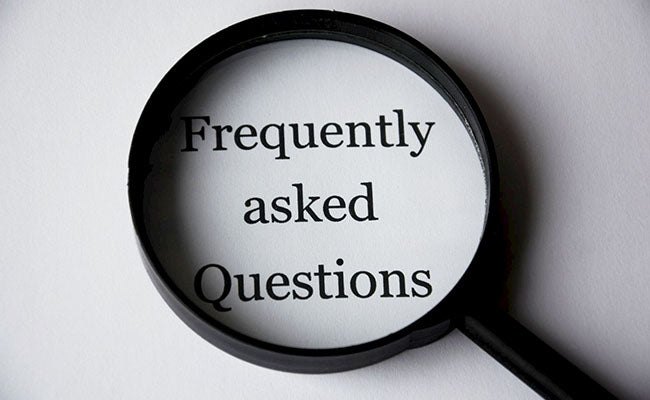The Complete Guide to Adding Borders to Your Photos on Mobile
In today's visual-first digital world, the presentation of your photos matters just as much as the content itself. Adding borders to your images can transform ordinary snapshots into polished, professional-looking content that stands out on social media, in digital portfolios, or even in printed materials. Whether you're a casual photographer, a social media enthusiast, or someone who simply wants to enhance their personal photo collection, understanding how to effectively use border applications can elevate your entire visual game.
Why Borders Matter in Modern Photography
Borders serve multiple purposes beyond mere decoration. They create visual separation between your image and its background, drawing the viewer's eye directly to your subject. A well-chosen border can add context, establish mood, or reinforce a particular aesthetic style. White borders, for instance, give photos a clean, gallery-like appearance that's perfect for minimalist feeds, while colored or patterned borders can inject personality and creativity into your imagery.
From a practical standpoint, borders also solve common composition challenges. They can rescue photos that were cropped too tightly, provide breathing room around busy images, or help maintain consistent dimensions across a series of photos without distorting the original content. For businesses and content creators, borders offer valuable real estate for watermarks or branding elements while keeping the main image intact.
Choosing the Right Border Application
The market offers numerous solutions for adding borders to photos, each with distinct features and capabilities. When selecting an application, consider factors like ease of use, customization options, output quality, and whether you need advanced features or just simple border addition.
Free applications typically provide basic functionality that's perfectly adequate for casual users. These options usually include standard border widths, basic color selection, and simple templates. They're ideal for quick edits and straightforward projects where you don't need extensive customization. Many free options also include advertisements or watermarks, though these are usually unobtrusive.
Premium applications, on the other hand, unlock advanced features like gradient borders, textured edges, rounded corners, shadow effects, and the ability to add multiple borders in layers. They often provide batch processing capabilities, allowing you to apply consistent borders across numerous photos simultaneously—a tremendous time-saver for anyone managing large photo collections or maintaining cohesive social media aesthetics.
Essential Features to Look For
When evaluating different border applications, certain features distinguish exceptional tools from merely adequate ones. Customizable border width should be a given, allowing you to adjust thickness from subtle hairline borders to bold, statement-making frames. Color selection capabilities are equally important; look for applications that offer full spectrum color pickers, not just preset options, so you can match borders precisely to your brand colors or image palettes.
Pattern and texture options expand your creative possibilities significantly. Some applications provide access to libraries of decorative patterns, geometric designs, or even photographic textures that can turn a simple border into an artistic element. For Android users specifically, integration with your device's gallery and seamless sharing capabilities ensure smooth workflow from editing to posting.
High-resolution export is non-negotiable if you plan to print your photos or use them professionally. Many mobile applications compress images during export, which can degrade quality. The best border applications maintain your original image resolution while adding borders, ensuring your final product looks crisp whether viewed on a phone screen or printed as a poster.
Popular Types of Photo Borders
Understanding different border styles helps you choose the most effective option for each image. Classic solid borders remain the most versatile choice, working well across virtually any photo type or platform. White borders continue dominating social media because they create clean contrast against most interface backgrounds while maintaining a timeless, professional appearance.
Polaroid-style borders, featuring wider bottom margins with space for captions, evoke nostalgia and work beautifully for personal memories or vintage-themed content. Film strip borders add a cinematic quality that's perfect for video stills or sequential photo stories. Geometric borders—circles, rounded rectangles, or irregular shapes—make images pop in grid layouts and can help establish distinctive visual branding.
Blurred or faded borders create seamless transitions between your image and background, particularly effective when posting to platforms with colored interfaces. These soft borders maintain focus on your subject while providing gentle visual separation.
My Personal Journey with Photo Borders
I stumbled into the world of photo borders somewhat accidentally while trying to maintain a cohesive Instagram feed. My photos varied wildly in orientation and composition, making my profile look chaotic and unplanned. After experimenting with various editing techniques, I discovered that applying consistent white borders to all my images instantly unified my aesthetic.
What started as a practical solution evolved into a creative exploration. I began experimenting with seasonal border colors—warm tones for autumn content, cool blues for summer shots—which added narrative dimension to my feed without overwhelming the actual photographs. The process taught me that borders aren't just decorative afterthoughts; they're powerful compositional tools that can completely change how viewers perceive and interact with your images.
One particularly memorable project involved creating a digital photo album for my grandmother. Using borders with subtle vintage textures, I transformed standard digital photos into images that felt tangible and nostalgic, bridging the gap between modern technology and her love for traditional printed photographs. The borders added weight and presence that flat digital images simply didn't convey.
Android-Specific Considerations
Android users benefit from the platform's openness and variety of border applications available through the Play Store. Many applications integrate directly with Android's native sharing system, allowing you to add borders as part of your regular editing workflow without switching between multiple programs. Look for applications that support Android's file system, enabling you to save edited versions alongside originals without overwriting them.
Widget support on Android can streamline your process further. Some border applications offer home screen widgets for quick access to frequently used border presets, eliminating the need to open the full application for routine edits. This functionality is particularly valuable for users who maintain consistent styling across their content.
Practical Tips for Effective Border Use
Consistency creates visual cohesion, especially for social media feeds or professional portfolios. Establish a signature border style—whether that's a specific width, color, or pattern—and apply it consistently across related photos. This doesn't mean every photo needs identical treatment, but maintaining recognizable elements helps build visual identity.
Consider your platform when choosing border specifications. Square images with borders work beautifully on Instagram but may require adjustment for Pinterest's vertical orientation preference or Facebook's varied aspect ratios. Some applications offer platform-specific presets that automatically adjust dimensions and border placement for optimal display across different social networks.
Contrast is crucial for border effectiveness. Light borders work best on dark or mid-tone images, while dark borders complement lighter photos. When in doubt, test both options and evaluate which draws attention to your subject more effectively. The border should enhance your image, not compete with it for visual attention.
Beyond Basic Borders
As you grow comfortable with standard borders, explore advanced techniques that add sophistication to your work. Layered borders—multiple borders of different colors or widths—create depth and visual interest. Shadow effects make images appear to float above their background, adding dimensionality to flat digital presentations. Gradient borders transition smoothly between colors, offering dynamic alternatives to solid borders while maintaining clean edges.
Text integration capabilities transform borders from decorative elements into informational components. Adding dates, locations, or captions within border space creates self-contained visual stories that don't require separate text descriptions. This approach works particularly well for travel photography, event documentation, or tutorial content where context enhances viewer understanding.
Making the Most of Free Options
Budget constraints shouldn't prevent you from creating beautifully bordered photos. Numerous free applications provide robust functionality that meets most users' needs. While they may lack some premium features, free options typically handle core border addition exceptionally well. The key is understanding their limitations and working within those parameters creatively.
Many free applications monetize through optional upgrades rather than restricting basic features. This model allows you to use essential tools indefinitely while providing paths to enhanced capabilities if your needs evolve. Take advantage of free trials offered by premium applications to test advanced features before committing financially, ensuring any purchase aligns with your actual requirements.
The Future of Photo Border Applications
As mobile photography continues advancing, border applications are incorporating increasingly sophisticated features. Artificial intelligence now powers smart border suggestions that analyze your image composition, colors, and subject matter to recommend optimal border styles. Augmented reality previews let you visualize how bordered photos will appear in physical spaces before printing.
Integration with social media platforms grows tighter, with some applications offering direct posting capabilities that bypass traditional sharing workflows. Cloud synchronization ensures your custom border presets and settings remain accessible across devices, maintaining consistency whether you're editing on your phone or tablet.
Adding borders to your photos represents a simple yet powerful way to enhance your visual content. Whether you're working with free applications or investing in premium tools, the right border application helps your images stand out while maintaining professional quality. By understanding the options available and applying borders thoughtfully, you can transform your photography from good to genuinely compelling, creating images that capture attention and communicate your creative vision effectively.






